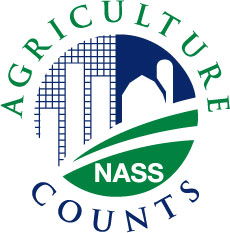Cattle Survey Info
0213 - 2010_July_Cattle_Backgrounder.doc
Agricultural Surveys Program
Cattle Survey Info
OMB: 0535-0213
|
Cattle Survey |
|
United States Department of Agriculture |
National
Agricultural Statistics Service |
|
|
July 2010 |
|
USDA’s National Agricultural Statistics Service (NASS) conducts the Cattle Survey every January and July. This survey provides information on inventory of beef and dairy cattle, calf crop and cattle operations.
HOW ARE THE DATA COLLECTED?
The Cattle Survey is conducted in all states except Alaska. The January survey includes nearly 50,000 cattle operations of all sizes, while the July survey includes a sample of nearly 10,000 larger cattle operations. Farm and ranch operators are generally contacted during the first two weeks of the month via:
Telephone – Computer-assisted telephone interviewing is the primary method.
Mail – Participants fill out and mail back the questionnaire that was mailed to them.
Internet – Secure, online reporting is the timeliest, most cost-effective option.
Personal interview – Respondents can request an interview with a NASS representative.
HOW IS THE INFORMATION USED?
NASS will publish survey results in the biannual Cattle report, which is generally released the latter part of the survey month. The January report provides state- and national-level estimates of total inventory, beef cows, milk cows, bulls, replacement heifers, other heifers, steers, calves and number of calves born during the previous year. The July report includes national-level estimates only. In addition, NASS’ Farms, Land in Farms, Livestock Operations report, published each February, includes data on the number of operations with cattle and calves, and percent of inventory by herd size.
This information is a critical decision-making tool for cattle producers and the cattle industry as a whole. For example:
Cattle inventory estimates provide an important baseline of beef and milk cow herd size. The
estimates of inventory, cattle on feed and calf crop enable producers and industry to evaluate
the number of cattle that will eventually move to market.
Cattle inventory estimates help producers to make marketing decisions and plan for herd
expansion or reduction. Producers also rely on credible estimates of supply to minimize
swings in farm gate prices.
Accurate estimates of beef cattle inventory help input suppliers, packers and government to
evaluate the slaughter volume expected in future months and to determine potential supplies
for export.
The information provided by survey respondents is confidential by law. NASS safeguards the privacy of all responses and publishes data only in aggregate form, ensuring that no individual operation or producer can be identified.
All reports are available through the NASS web site: www.nass.usda.gov. For more information on NASS surveys and reports, call the NASS Agricultural Statistics Hotline at (800) 727-9540.
| File Type | application/msword |
| Author | NortDe |
| Last Modified By | hancda |
| File Modified | 2010-10-05 |
| File Created | 2010-10-05 |
© 2025 OMB.report | Privacy Policy

